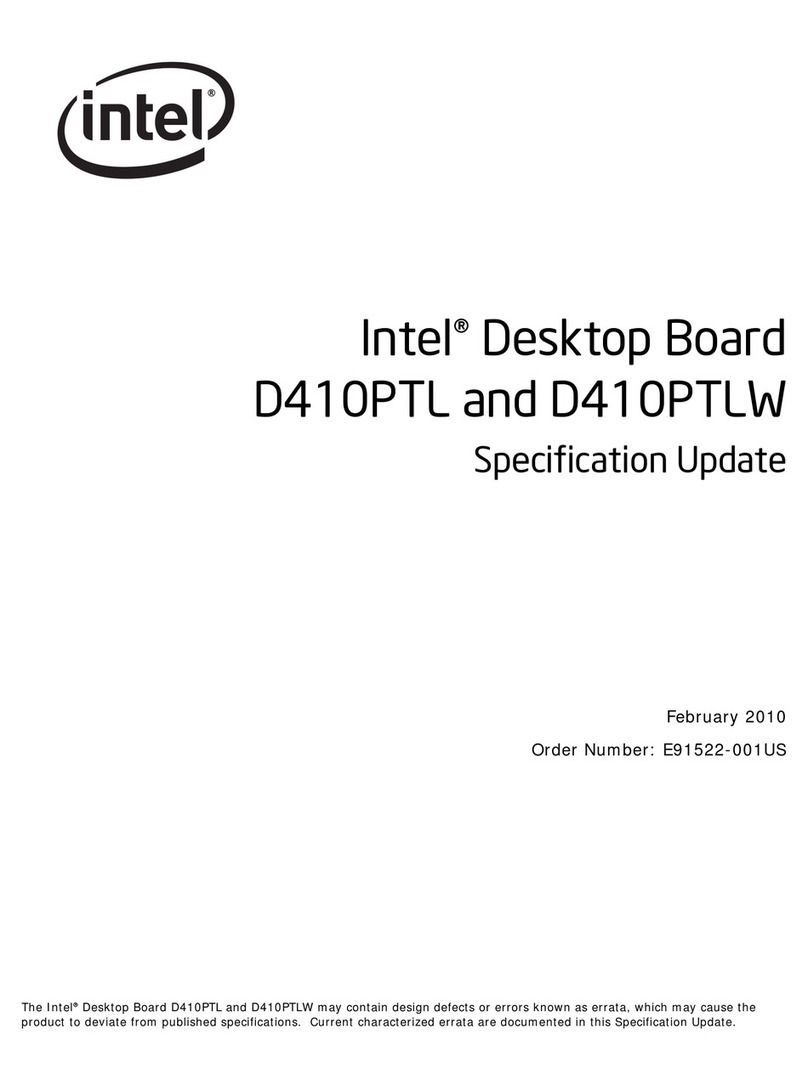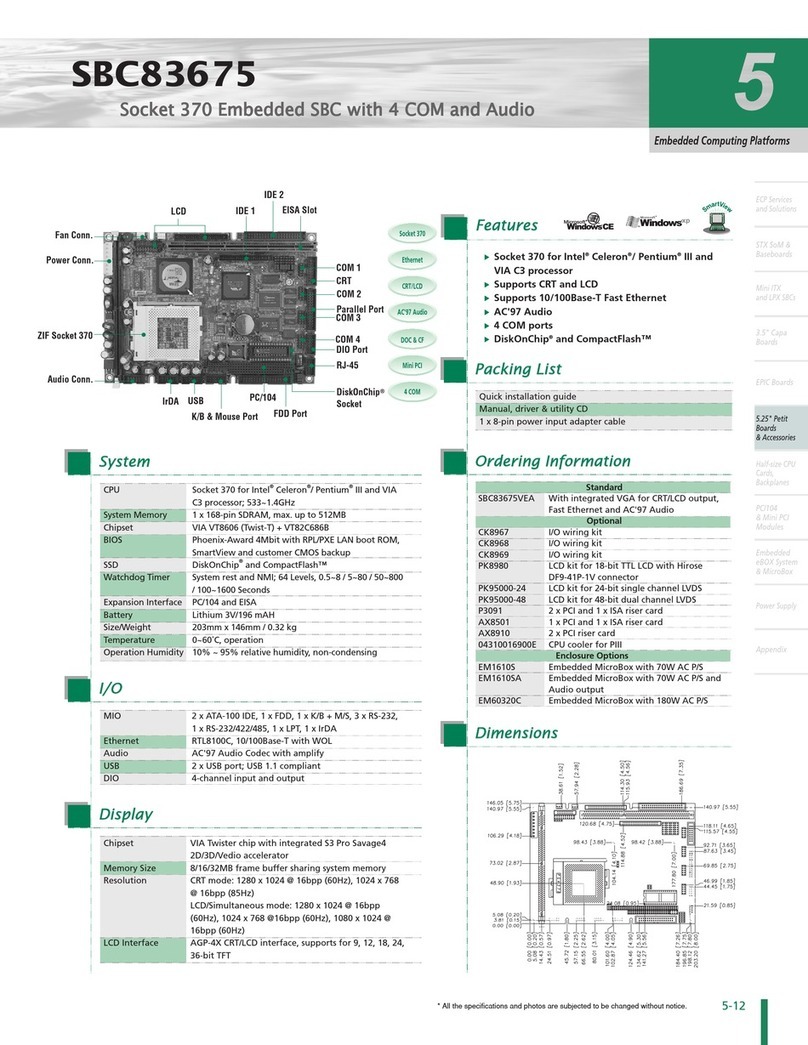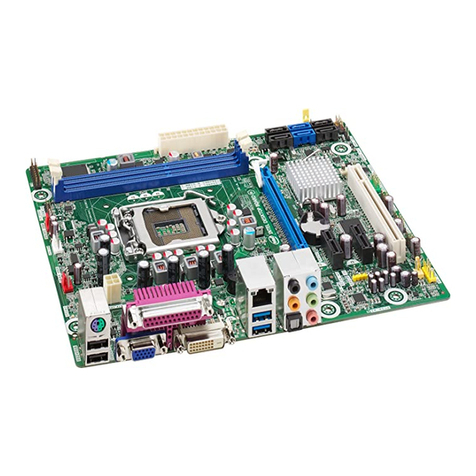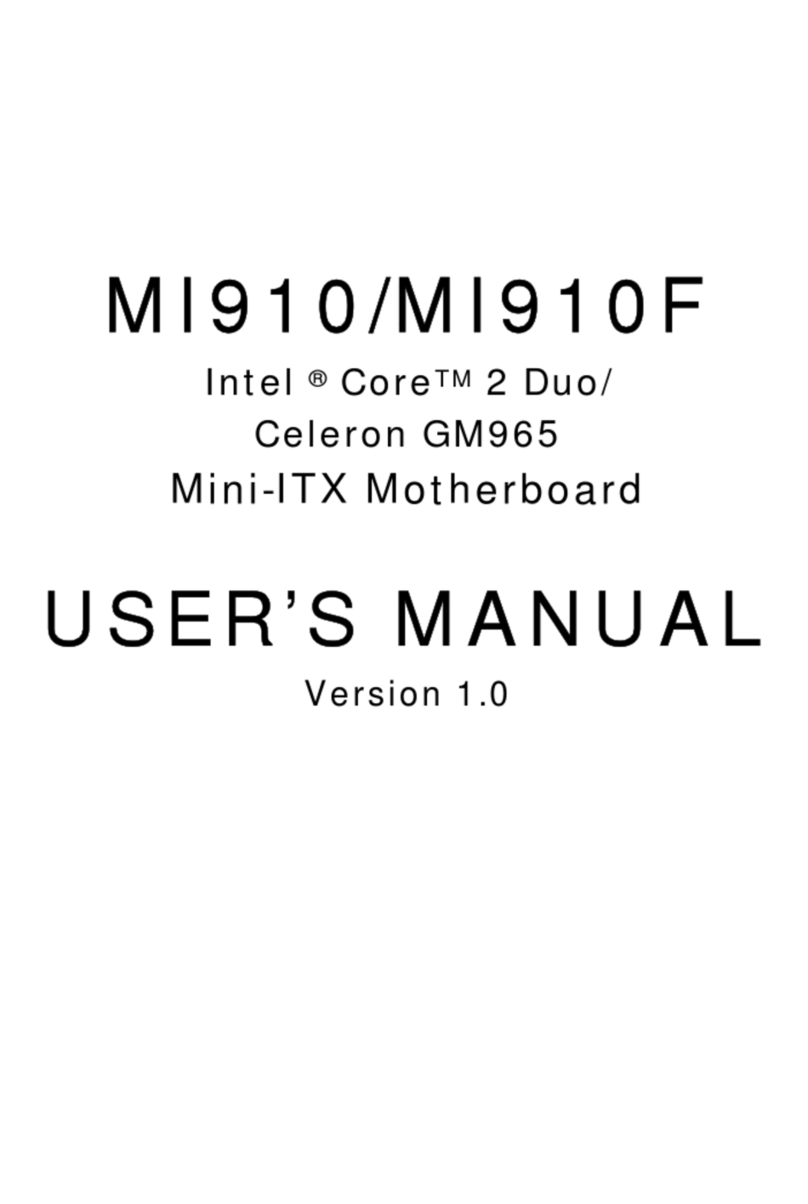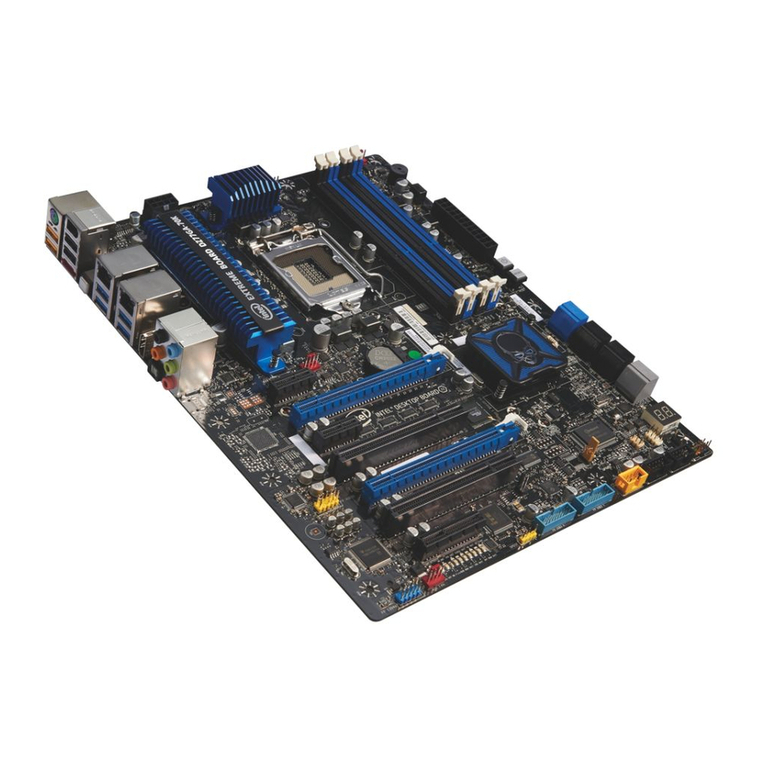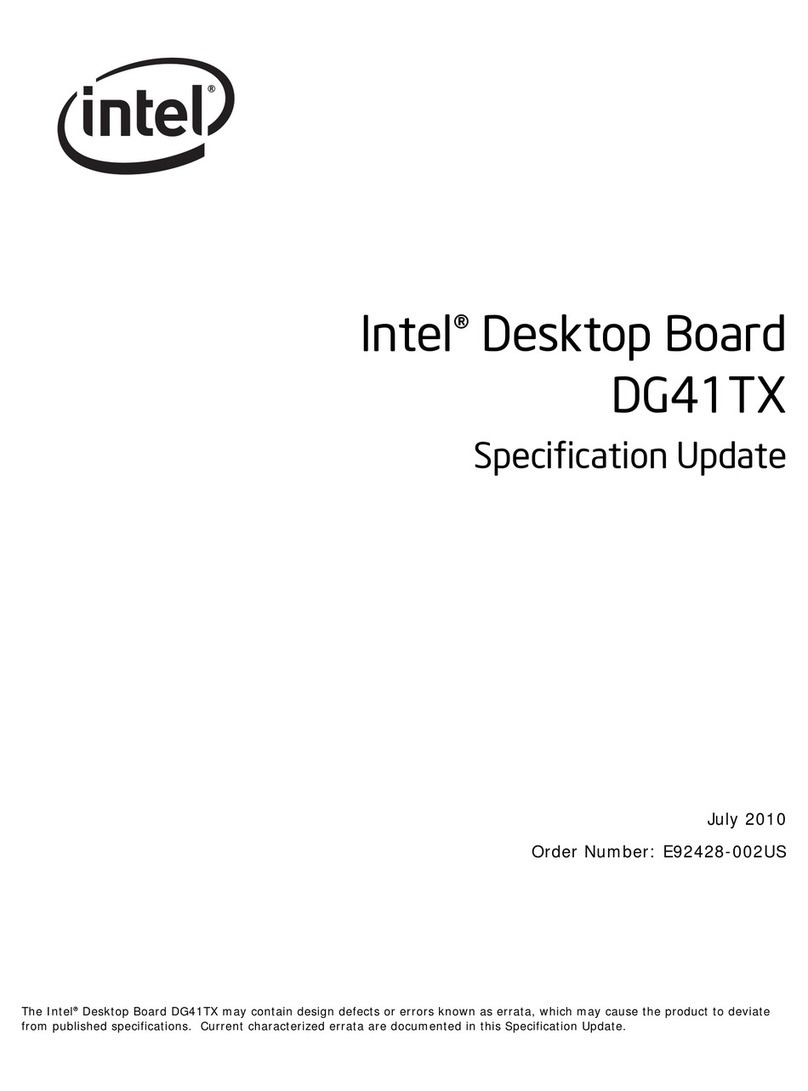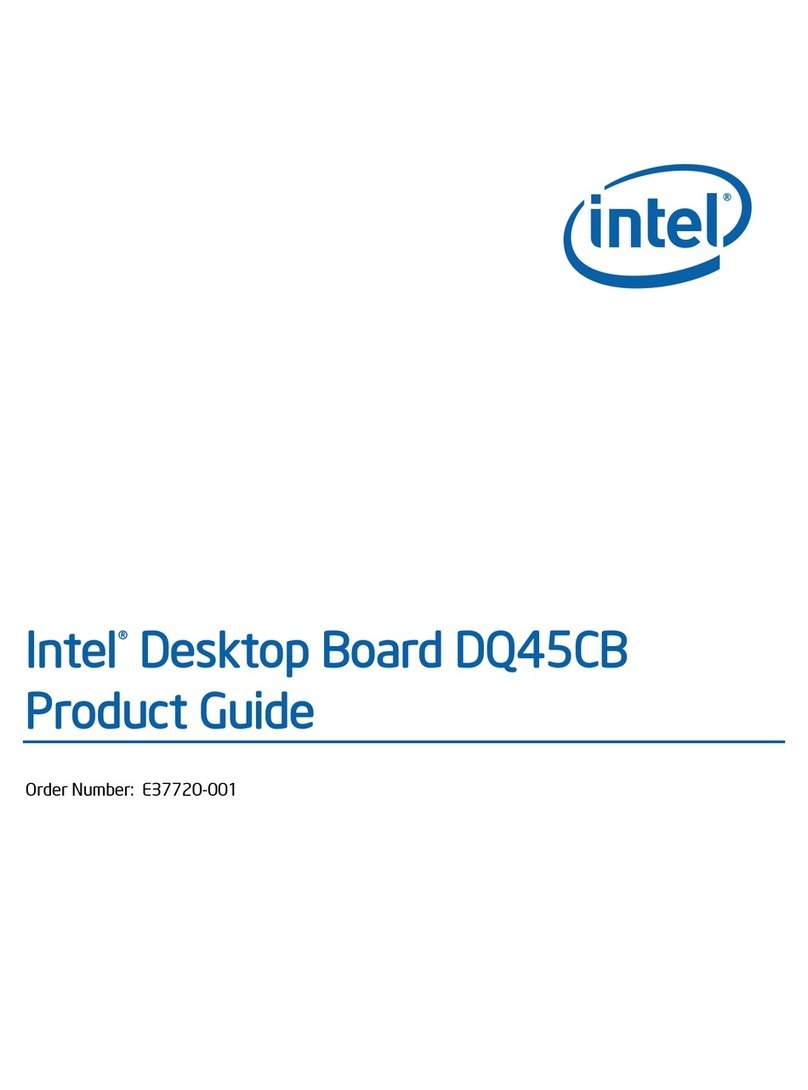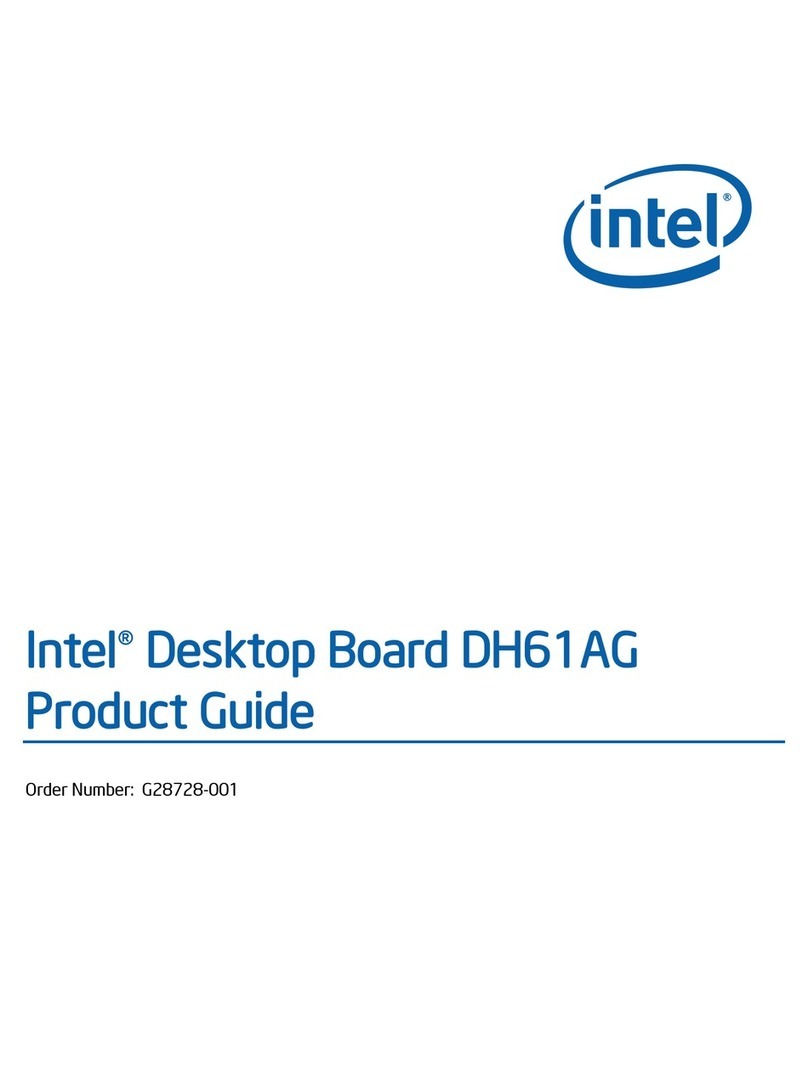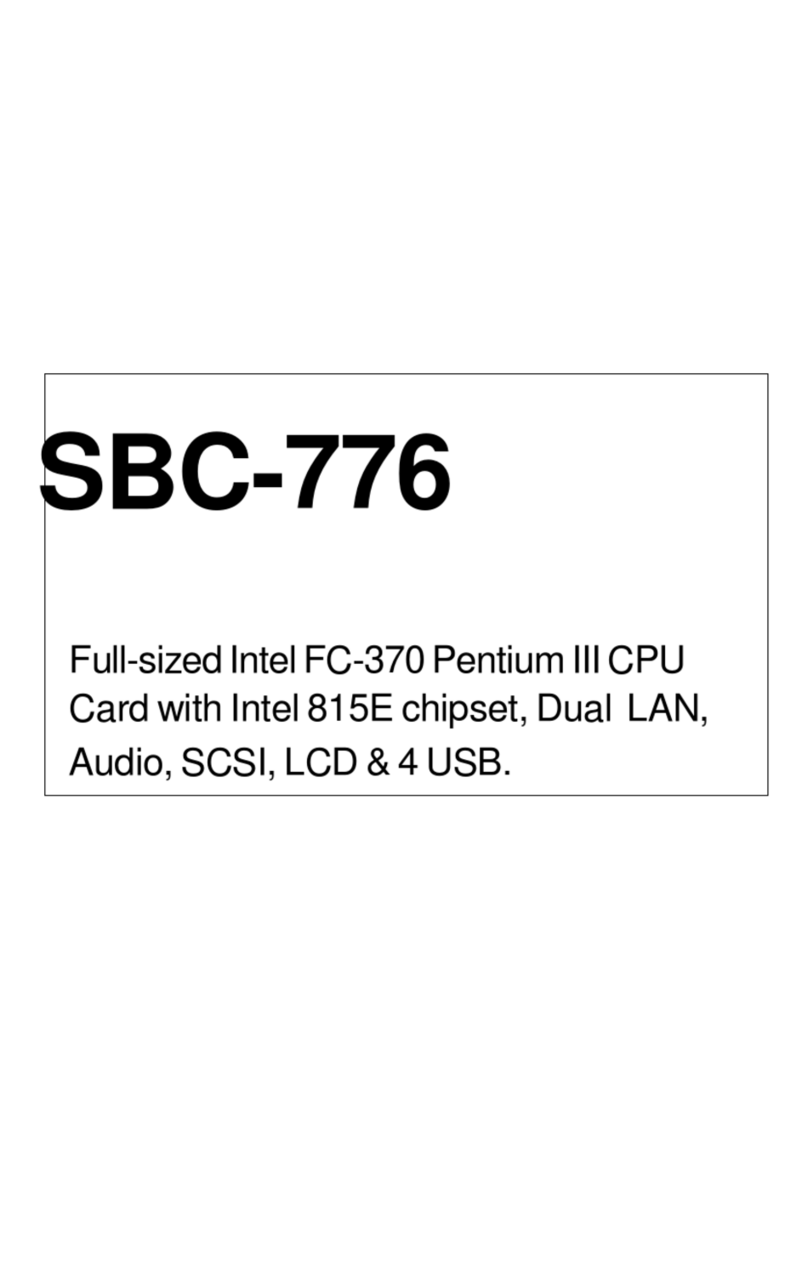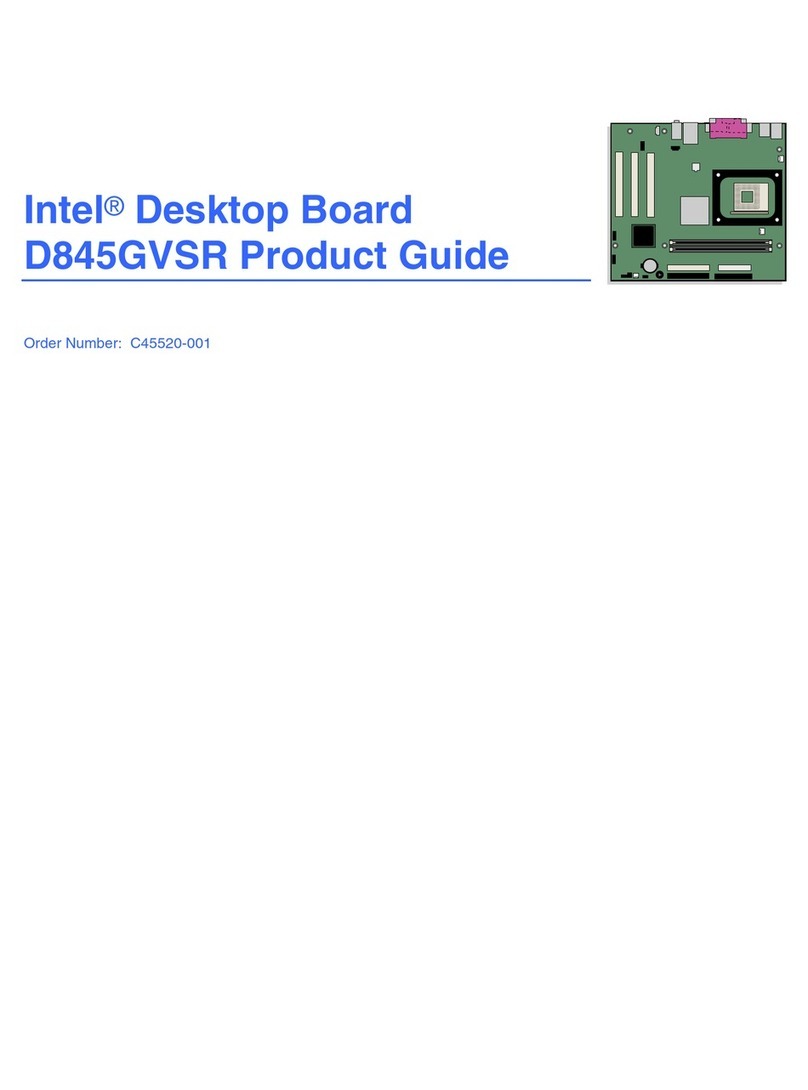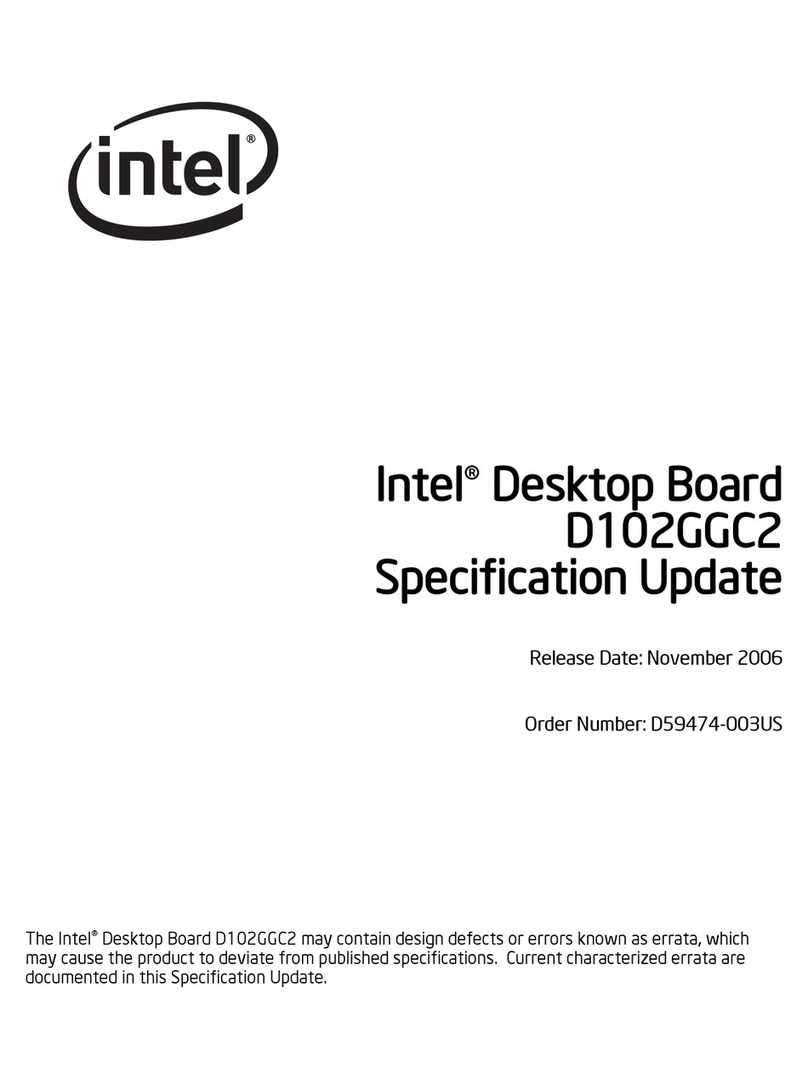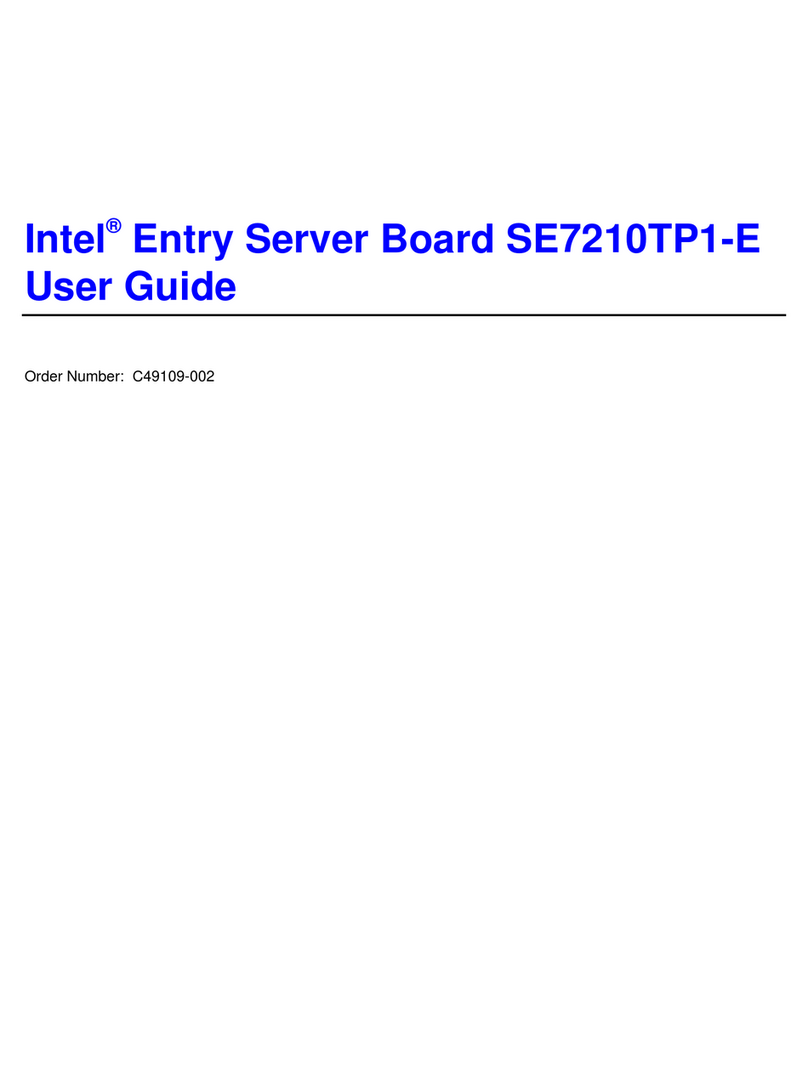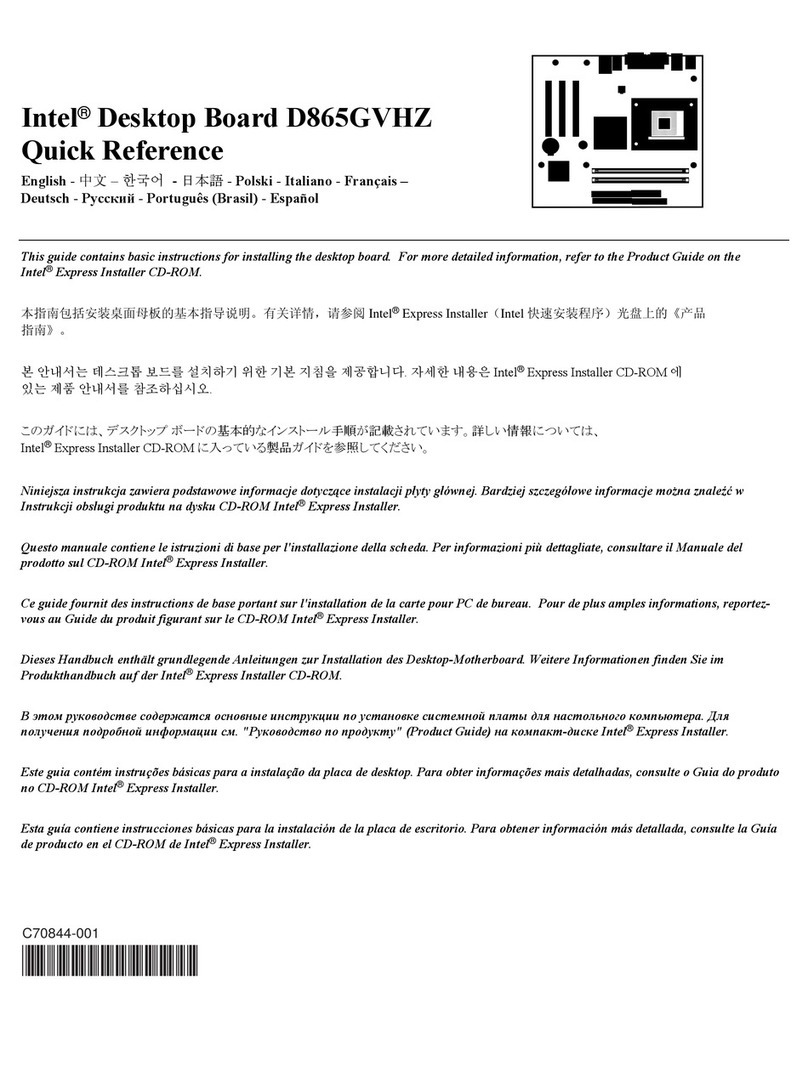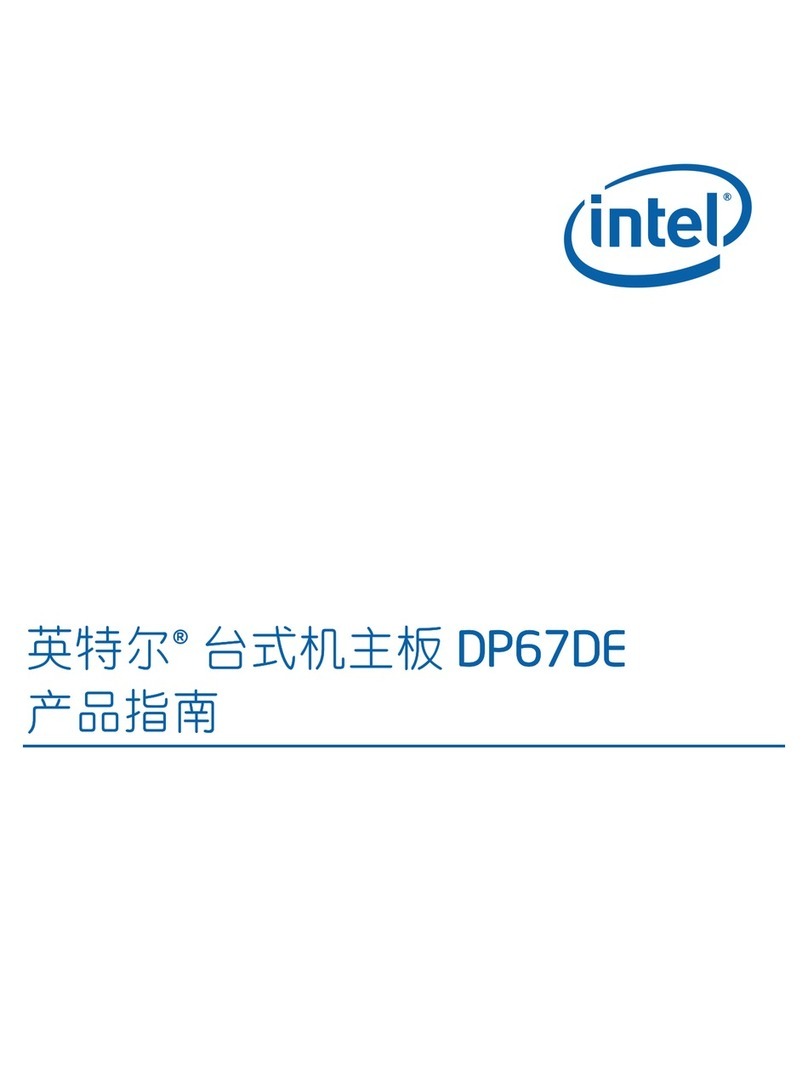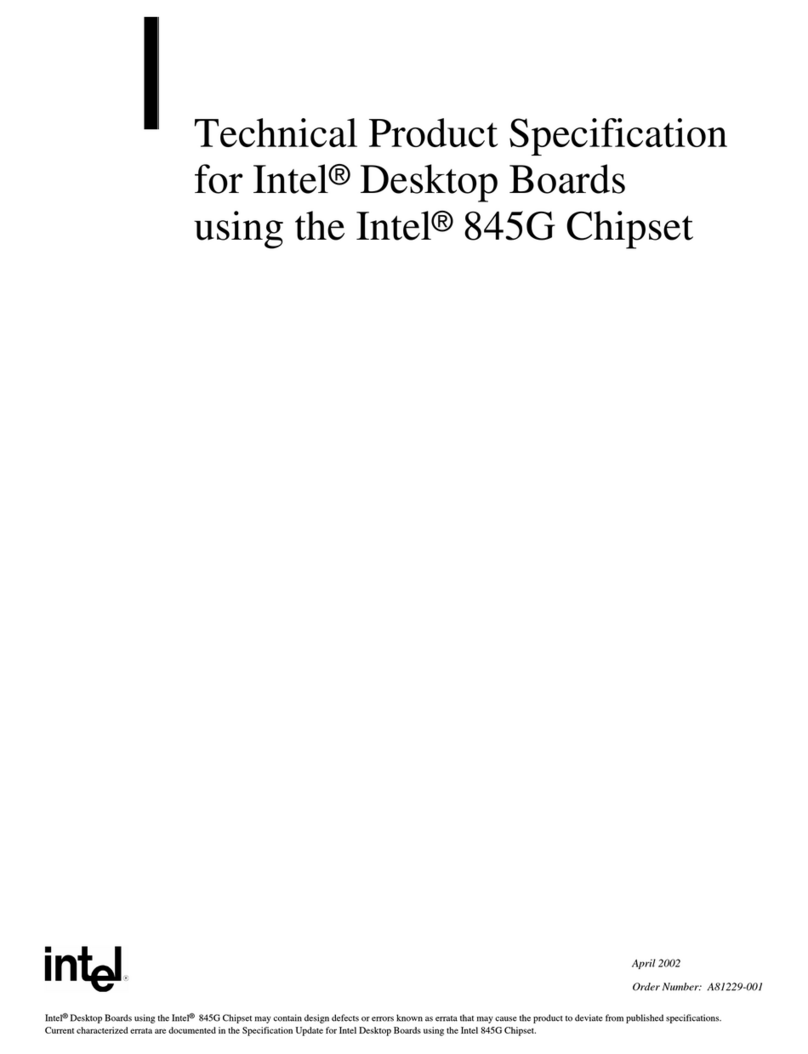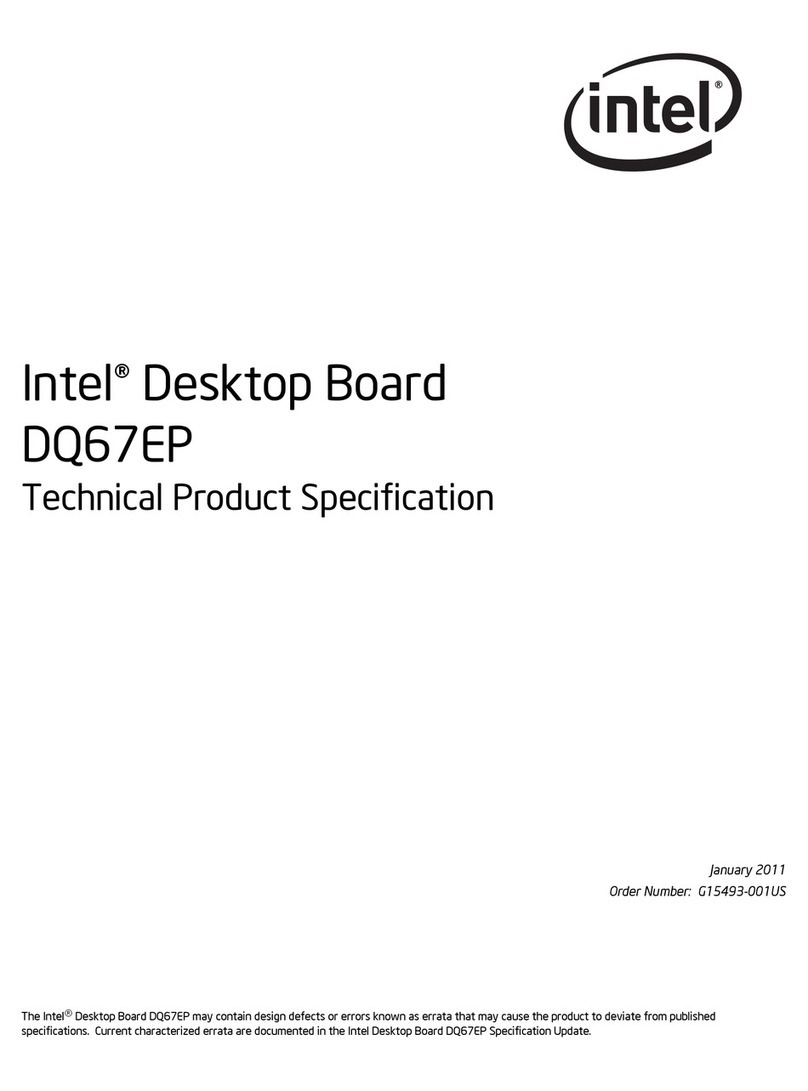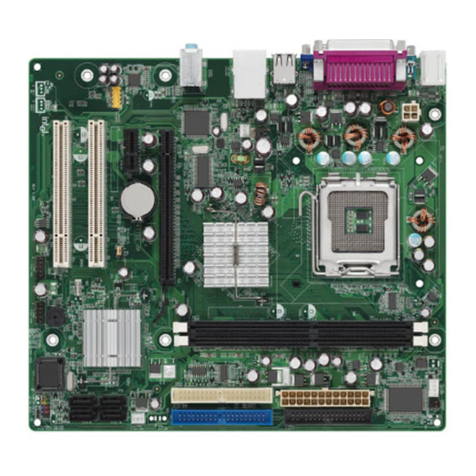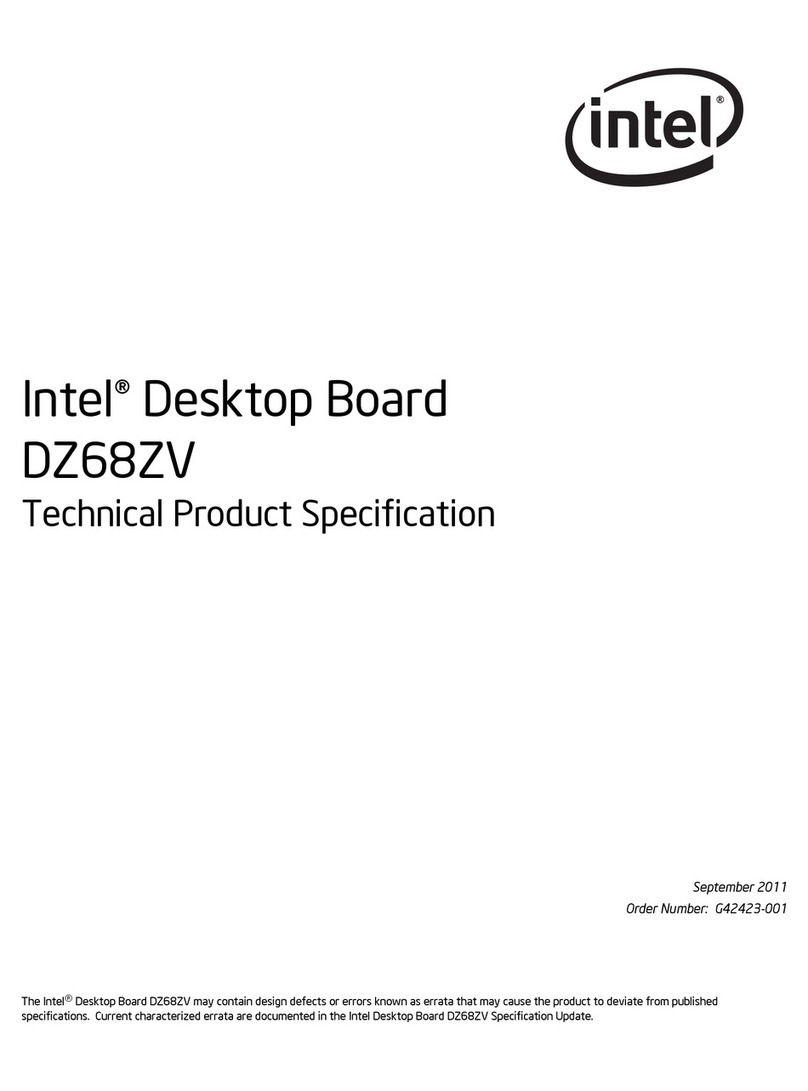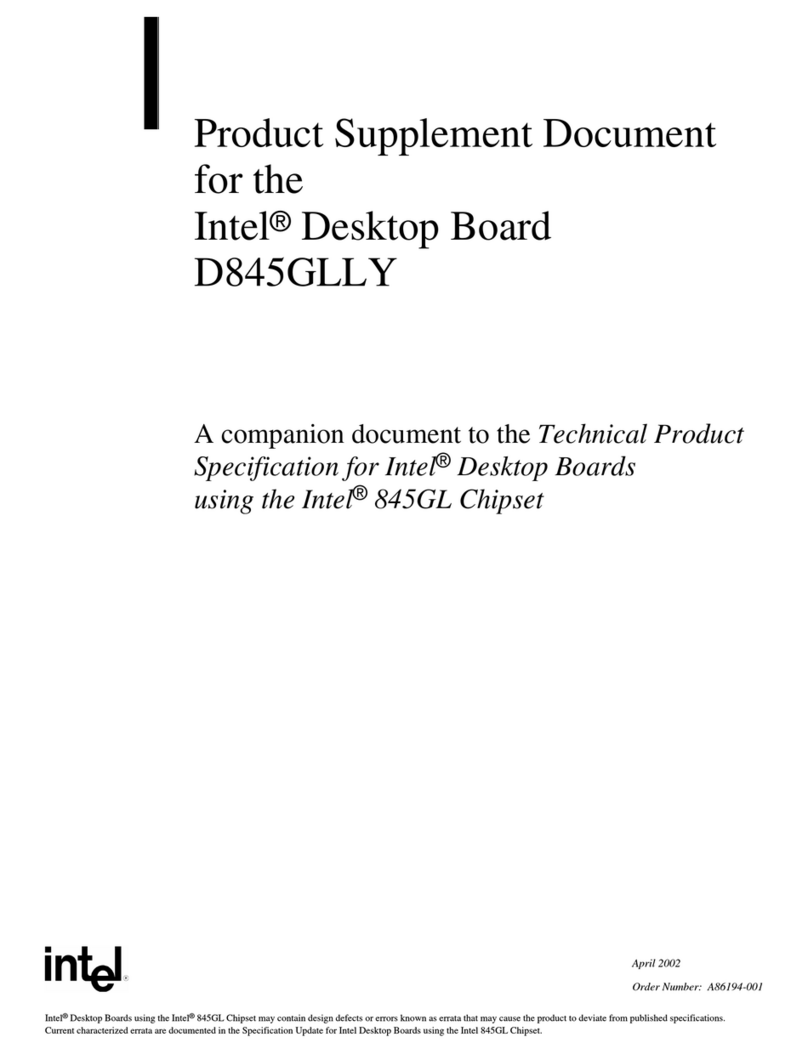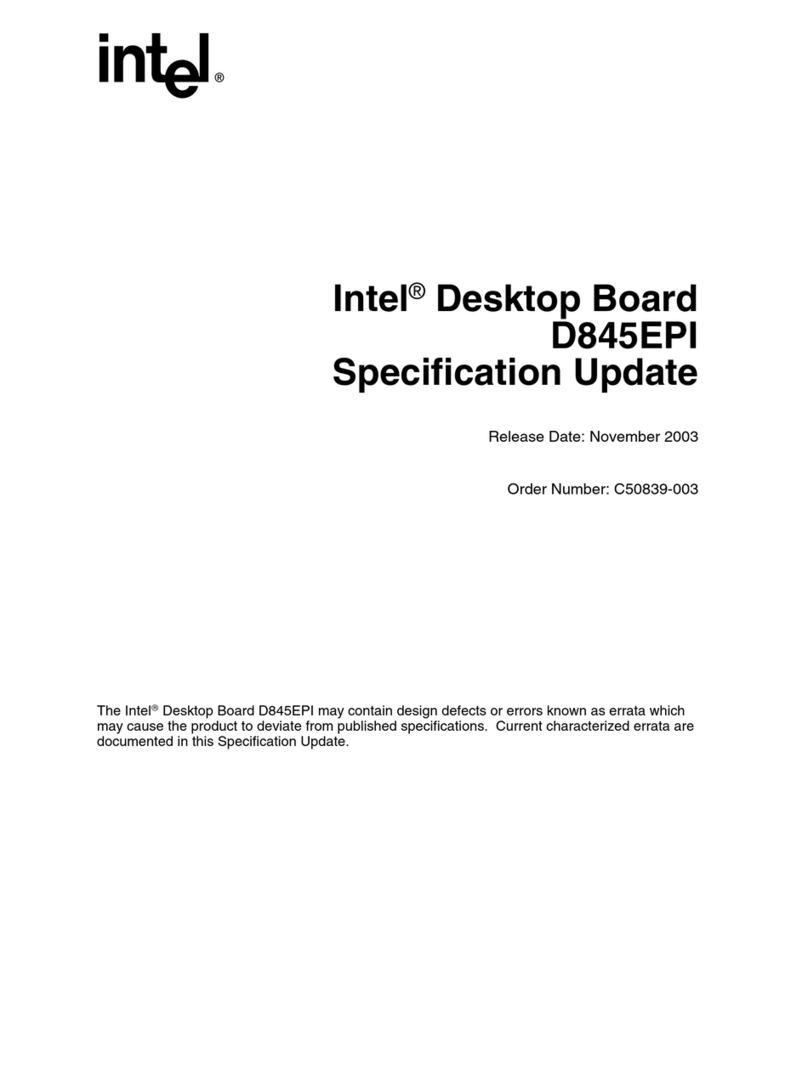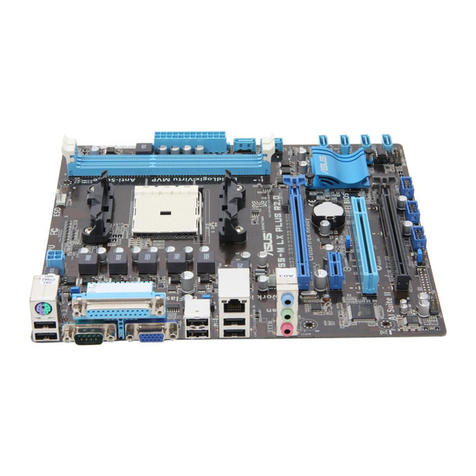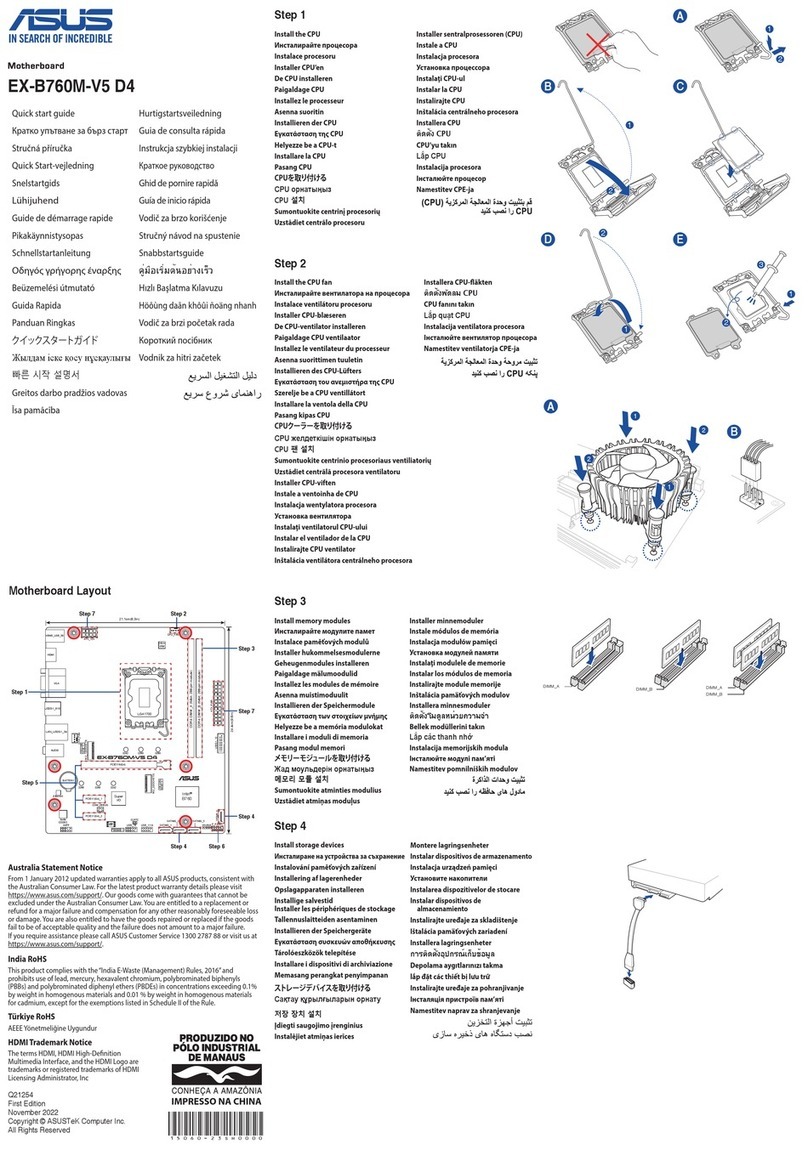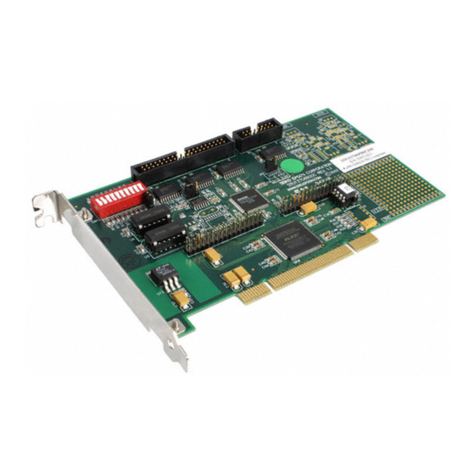
Intel Desktop Board D945PVS Technical Product Specification
vi
2Technical Reference
2.1 Introduction ..................................................................................................................37
2.2 Memory Resources......................................................................................................37
2.2.1 Addressable Memory.....................................................................................37
2.2.2 Memory Map..................................................................................................39
2.3 DMA Channels.............................................................................................................39
2.4 Fixed I/O Map...............................................................................................................40
2.5 PCI Configuration Space Map......................................................................................41
2.6 Interrupts......................................................................................................................42
2.7 PCI Conventional Interrupt Routing Map .....................................................................43
2.8 Connectors...................................................................................................................44
2.8.1 Back Panel Connectors.................................................................................45
2.8.2 Component-side Connectors.........................................................................46
2.9 Jumper Block ...............................................................................................................55
2.10 Mechanical Considerations..........................................................................................56
2.10.1 Form Factor...................................................................................................56
2.10.2 I/O Shield.......................................................................................................57
2.11 Electrical Considerations..............................................................................................58
2.11.1 DC Loading....................................................................................................58
2.11.2 Add-in Board Considerations.........................................................................58
2.11.3 Fan Connector Current Capability.................................................................59
2.11.4 Power Supply Considerations .......................................................................59
2.12 Thermal Considerations...............................................................................................60
2.13 Reliability......................................................................................................................62
2.14 Environmental..............................................................................................................63
2.15 Regulatory Compliance................................................................................................64
2.15.1 Safety Regulations ........................................................................................64
2.15.2 EMC Regulations...........................................................................................64
2.15.3 European Union Declaration of Conformity Statement..................................65
2.15.4 Recycling Considerations..............................................................................66
2.15.5 Product Certification Markings (Board Level)................................................67
3Overview of BIOS Features
3.1 Introduction ..................................................................................................................69
3.2 BIOS Flash Memory Organization ...............................................................................70
3.3 Resource Configuration ...............................................................................................70
3.3.1 PCI Autoconfiguration....................................................................................70
3.3.2 PCI IDE Support............................................................................................70
3.4 System Management BIOS (SMBIOS) ........................................................................71
3.5 Legacy USB Support....................................................................................................71
3.6 BIOS Updates..............................................................................................................72
3.6.1 Language Support.........................................................................................72
3.6.2 Custom Splash Screen..................................................................................72
3.7 Boot Options ................................................................................................................73
3.7.1 CD-ROM Boot ...............................................................................................73
3.7.2 Network Boot.................................................................................................73
3.7.3 Booting Without Attached Devices................................................................73
3.7.4 Changing the Default Boot Device During POST..........................................73
